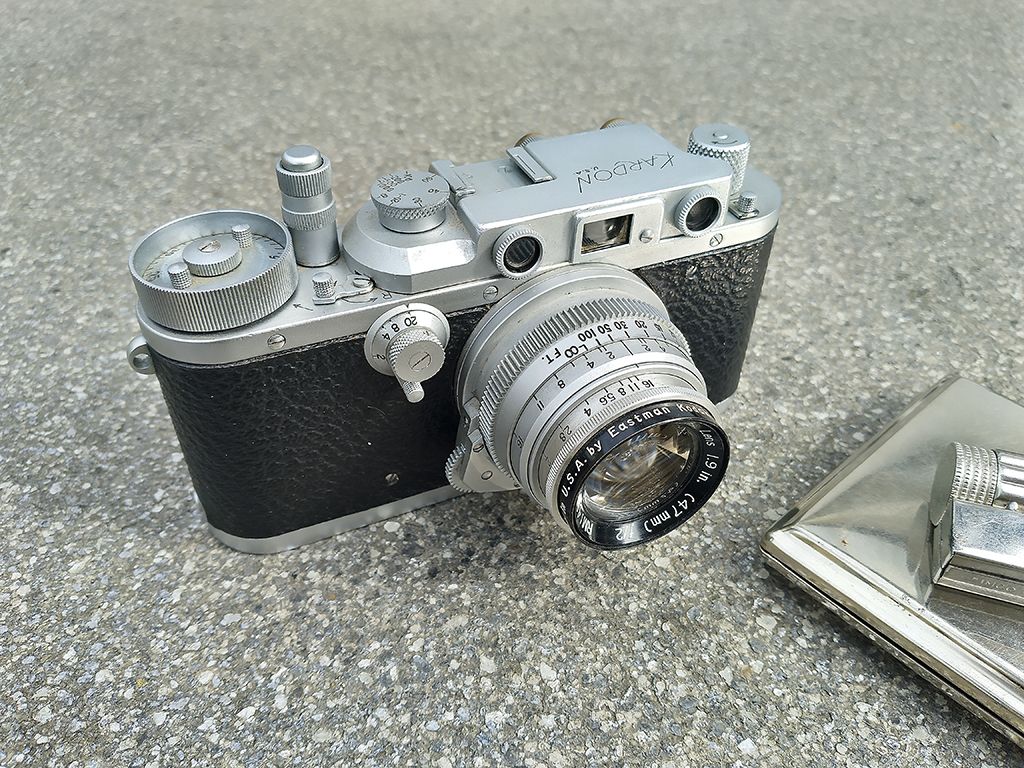boojum
Ignoble Miscreant
I am always amazed at just how many male children make it to 21. ;o)



Well...Had for years this ltm biogon... I finally bought a if/iiif for it. Seems to fit OK. Now shipping off the iiif for a service and new curtains, it sat for decades in a display case. At least the summicron is not scratched.
View attachment 4836754
I have a nice lineup of lenses to go with it. I also have a biometar and an orthometar but the rear of the lens interferes with the rf cam at short distance. I wonder about selling these and buying a less fiddly wide angle.





Interesting piece of machinery. Never even heard or read about it.My latest addition

US Army Signal Corps PH-629/UF , a.k.a. the Premium Instrument Corporation's "Military Kardon" camera.
This "Cold Camera" from 1949-1954. Only 1654 made.
Featuring a 6-element Kodak 47mm f/2 Ektar lens.
Interesting piece of machinery. Never even heard or read about it.
Thanks for your info! Now I'm a little wiser 🙂The story is an interesting one,
Basically during WW2, the US Government asked Leitz N.Y. if they could produce Leica IIIa cameras for the military.
Leitz N.Y. couldn't do it, but Peter Kardon of the Premium Instrument Corp. went to work to create a copy that could be mass-produced.
Unfortunately the war ended and the contract was cut short.
In 1947 Kardon's design was adapted to resist heat and cold temperatures by request of the Goverment, hence the bigger knobs to operated it with gloves.
In 1949 it was accepted and produced until 1954
Back in the day, the Improvised Munitions Blackbooks, published by Paladin Press and advertised in the back of Soldier of Fortune magazine, had an allure to young males such as myself. It turns out that they were reprints of US Army field manuals. Paid for by the taxpayer. Then, post-9/11, they became “terrorist” literature for a few years, with people forgetting their official USG origins. It also makes me wonder how many of those techniques were taught by the US Army School of the Americas to “freedom fighters” in Central America, many of whom are now the military wing of the narco cartels. Learn from the best, be the best!My friends and I made explosives with calcium carbide, which any kid could buy in a hardware store. We also charged electrolytic capacitors from old radio chassis on a Model T Ford coil and a lantern battery.
I remember other kids making iodine crystals that exploded on impact. One kid made some of these crystals, packed them carefully in cotton, and stashed them in a flat plastic case that he unwisely stowed in his back pocket. On the school bus, someone shoved him backwards, cracking that case on the steel edge of one of the seats, the crystals responded and burned the kid's butt!
Those were the days!😎
- Murray
I’ve really only been using and collecting odd and rare LTM lenses since 2016, but if I’ve learned anything in the past 8 years, it’s that this little corner of Leica and Leica adjacent collecting is completely detached from reality. I’m still having fun, though.Simlar 50/1.5. Speaking as a former owner of one, I can't understand the high price this lens is commanding. My example was pretty ordinary actually.













